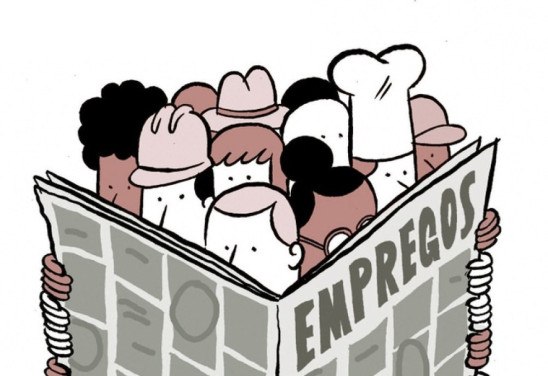In the quarter through July, Brazil had 9.9 million unemployed, a contraction of 12.9% compared to previous one
09/01/2022
The unemployment rate fell to 9.1% in the quarter through July, down from 10.5% in the quarter through April and 13.7% in the same period last year, the Continuous National Household Sample Survey (Pnad) released on Wednesday by the Brazilian statistics agency IBGE shows.
In the quarter through June, the rate was 9.3%. It is the lowest unemployment rate for a moving quarter through July since 2015 (8.7%) and the lowest for any three-month period since the fourth quarter of that year (9.1%).
The result was above the median expectations of 27 consultancies and financial firms consulted by Valor, which pointed to a rate of 9% in the quarter ending in July. The projections ranged from 8.8% to 9.2%.
In the quarter to July, the country had 9.9 million unemployed — people aged 14 or more who looked for a job but could not find one. The number shows a contraction of 12.9% compared with the previous quarter (1.5 million people less) and a drop of 31.4% compared with the same period in 2021 (4.5 million people less). The level of unemployed people is the lowest since the quarter ending in January 2016.
The figures include both formal workers — that is, with a contract — and informal workers, that is, without an employment relationship, such as app drivers and day laborers. These also grew. The number was 39.294 million people employed in the informal labor market, the highest since the series began in 2015.
/i.s3.glbimg.com/v1/AUTH_37554604729d4b2f9f3eb9ad8a691345/internal_photos/bs/2022/G/Q/rqqtvLThu2TzLSKfLPDQ/94fd0768900687e16fefebdd6599a9dc.jpg)
Adriana Beringuy — Foto: Divulgação
Adriana Beringuy, the coordinator of IBGE’s Household Sample Surveys, pointed out that the reduction in unemployment is spread across the 10 economic activities monitored by the institute. Even so, more than 60% of the new jobs created by the labor market in the quarter ending in July, compared to the previous quarter, came from only two sectors (commerce and the public sector).
“This process of reducing unemployment is widespread among activities. Even the group of information technology services, which has been always growing, continues to expand. Some services showed recovery towards the end of 2021, including face-to-face services. And in the past few quarters we had a very vigorous growth in commerce and the public sector, as an effect of the post-pandemic,” she said.
Between May and July, the employed population (employees, employers, public servants) was 98.7 million people. This represents an increase of 2.2% compared to the previous moving quarter, which ended in April (2.2 million more people employed). Compared to the same quarter in 2021, it rose 8.8% (eight million more people).
All the 10 economic activities reported an expansion of job positions in the quarter through July 2022, compared with the previous quarter, but only two of them were classified by IBGE as growth: commerce and the public sector. The other eight variations were considered stable by the institute, for not having significant variations and because they were within the survey’s margin of error.
Of these 2.2 million more people employed in the quarter, 1.34 million (62.2%) got a job in the sectors of commerce, automotive and motorcycle repair and public administration, defense, social security, education, human health, and social services.
In commerce, there were 692,000 more people in the labor market, 3.7% more than in the previous quarter. The public sector, meanwhile, employed 648,000 more people, an increase of 3.9% compared with the previous quarter.
The labor force — that is, people aged 14 and older who are employed or looking for a job — was 64.7 million in the quarter to July 2022, statistically stable compared with the previous quarter and 2.8% lower than the same period last year (1.9 million fewer people).
The average income of workers fell 2.9% in the quarter through July 2022, compared to the same period in 2021, to R$ 2,693, according to the survey — R$80 less. The average real usual income of workers considers the sum of all jobs. Compared to the quarter ending in April, there was an increase of 2.9% (R$75 more).
The real income mass usually received by occupied people (in all jobs) was R$260.6 billion in the quarter from May to July 2022. The figure shows an increase of 5.3% compared with the previous quarter (ending in April), or R$13.1 billion more. Compared to the same period in 2021, there is an increase of 6.1% (R$14.9 billion more).
*By Lucianne Carneiro — Rio de Janeiro
Source: Valor International



